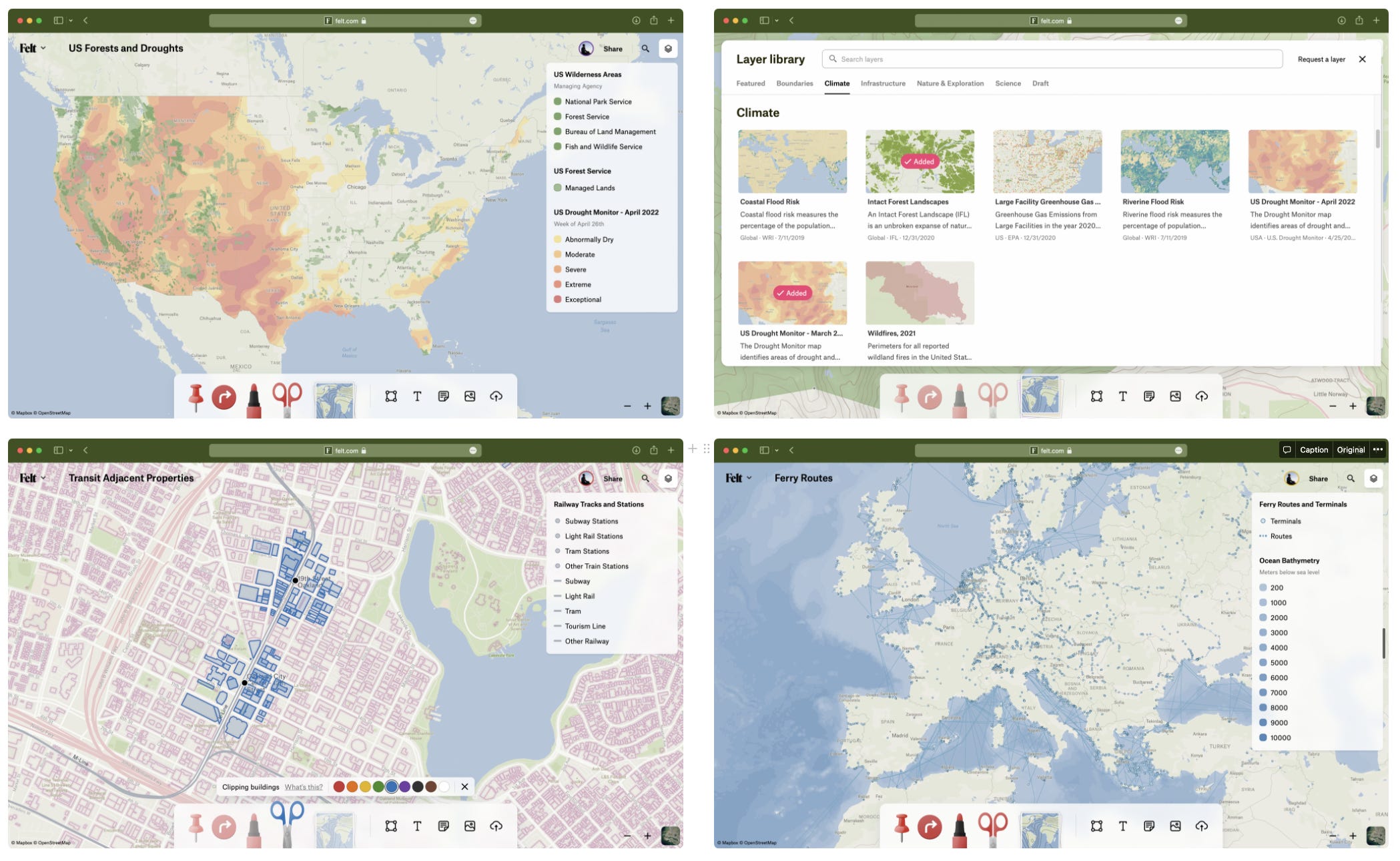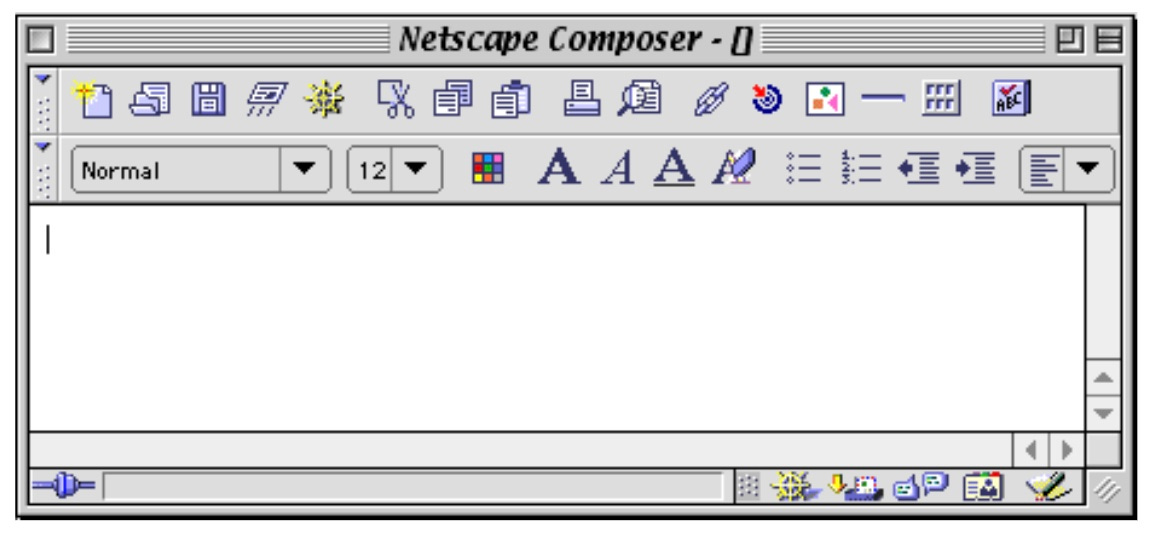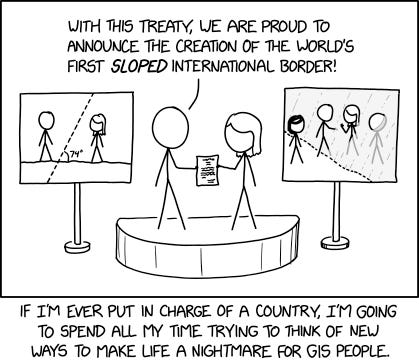Margins - Why are maps so hard to make?
Hi! It’s Can. Remember me? Today, we are launching the public beta of Felt and announcing our $15M Series A funding. Felt is the best way to make maps on the internet. BUT WAIT! It’s also (mostly) why I haven’t been on Margins lately. Ranjan has been on a tear the past few months, so maybe you haven’t even noticed. I don’t blame you. He’s carried the torch with gusto, even occasionally one-upping my risqué Twitter game. But finally, I’ve got something to share with y’all too! Been a while. Long before “creator economy” entered my lexicon and ruined me forever, I loved creating things. Learning my first programming language (VBScript) predates my first foreign language (English) just so that I could create a website and share it with others. And some of those websites from 23 years ago are still implausibly up?! Mind you, making a website in the 90s was not for the faint of heart. Even the simplest tasks required an alphabet soup of technologies one had to master. You had to line up your HTMLs with the right CSSes, organize them all in PHPs and FTP them all into the right CGI-BINs, all hooked up to the right SQLs. Things have changed quite a bit since then — for everything. Almost all creative formats, all the way from text with Google Docs to videos with Frame.io, have gone through two important forms of transformation. First, the tools themselves have become much more accessible, both in terms of cost and ease of use. There’s no longer downloading, let alone installing software. Developers complain about how making a website is an arduous task now with the maddening complexity in the JavaScript ecosystem but trust me; I’d take Squarespace over CuteFTP or Geocities’ neighborhoods UI anytime. Secondly, the creations themselves have also moved to the cloud. Not only that there is no more software, there are no more files either. All the complexity of not just creating, but sharing have been eliminated behind a simple idea: everything is just a URL. All you need is a URL, a pointer that you can copy-paste, share, store, embed into a QR code, and the computer does the rest. The combination of those two ideas is extremely powerful. A Figma document is not just a Photoshop file in the cloud, but also the Figma editor bundled with it. This is the true promise of the World Wide Web coming to fruition. The web was never meant to be a read-only medium; that’s why the first browsers came with the editor also built in. But we are getting there. Yet, one format has resisted both of these transformations: maps. For all their richness, history, depth, potential to not just inspire but also help solve problems, creating and collaborating a map today is not much easier than it was in the 90s. In most ways, it’s probably much harder. And that’s a shame, especially when the world needs more people collaborating on global problems today than ever. That is the problem Felt is aiming to solve. Felt wants to make maps a native citizen of the internet. Putting Maps, well, on the MapWe want the same person who would be interested in learning SQL to make a website, to be able to make a map that’d help them plan out their trip without having to learn about SRIDs. Just like no one asks a non-programmer about tabs versus spaces, no one should be bothered to pick between LatLon or LonLat to make a map. Felt is not just a tool for people who make maps today; it is a tool for people who couldn’t make them until now. It is a bit of a mystery to me why this field is so barren for consumer grade, amazingly easy to use products. I do not say with the intention of diminishing the work of tens of thousands of incredibly smart, talented, and curiously charming people. The GIS software is complex because the world is. But therein lies the Borgesian paradox: it should not have been. The software should have been simpler than the world it tries to model and operate in. We wanted to strip away as much of the incidental complexity by making decisions where we can. We knew we’d be making some people unhappy along the way, but we think the trade-off is worth it. For example, that is why Felt works in a single projection system, Web Mercator, for now. This might be anathema to many people in the field, but also the way most people look at maps. Similarly, we removed many features and options from our tools along the way. The cognitive load of a user-interface increases exponentially, not linearly with the number of features you add. We might have made the wrong call on some of them, but a canvas is a much easier place to start draw on than a smorgasbord. And equally important, we wanted our maps to be nothing more than a URL; there are no files (or combination of files that you have to carefully zip) in Felt. There’s a URL, and with the URL comes everything you need from all the world-class data we have to all the other types of content attached to the map like pictures, videos, and links. You copy and paste a URL in your browser and it just works, like it should have all along. Building a BuildingDeciding to build map-making software has been the scariest thing I’ve done so far. I’ve spent countless nights reading documentation on arcane and mysterious subjects to understand the most minuscule detail, and often wondered if one day it’d all click. Much to my surprise and co-founder Sam’s delight, it did. And it’s been the most fun thing too: maps are just fun and seeing what was once a blank slate, literally nothing more than a barren UI with blue for water and yellow for land, turn into a world-class software has been breathtaking. Yet, no amount of fun and fear of building Felt, The Product, can compare the sheer satisfaction of building Felt, The People. It’s easy to wax poetic about the kind of software my co-founder and I wanted to build all along, but none of this would have been possible without the people we’ve been able to recruit. What I can take credit for is giving people the motivation to surprise themselves with what they can do. Thank you, each and every one of you. I do not come from a land of eternal optimists, as some at Felt like to point out. And today of all days, naturally, I am scared of what might happen as we launch Felt into the world. I worry about it getting abused, and of course it being ignored. But the real scary part is how much more there is to be built. How many more mapmakers can we enable if we do a couple more things right? How much more friction can we eliminate between what people want to do and what our tools can do for them? How many more maps would it take before someone solves the next crisis plaguing their town, or what parts of the world would benefit from us tightening the screws even more? What would it take to put maps, well, on the map?  I don’t remember the last time I was this excited, nor this scared. There we go. Felt. The best way to make maps on the internet. PS: The Felt <> Margins connection cuts deep. The way we’ve got connected to our investors at Footwork was through Nikhil responding to one of my Margins posts. In my infinite wisdom, however, I’ve managed to PPS: Felt is hiring! If you liked this post from Margins by Ranjan Roy and Can Duruk, why not share it? |
Older messages
Late Stage Prisoners Dilemma
Friday, May 13, 2022
Tigers and hedge fund hotel parties
Elon's Giant Package
Monday, April 25, 2022
A mini-grand theory on what he's up to with Twitter
9.2% and the Master of Twitter
Tuesday, April 5, 2022
13Ds, Gs, and the SEC
Robinhood and Promoting Democracy
Friday, January 21, 2022
Opening up the IPO club
Margins takes on Web3
Monday, January 10, 2022
Math is hard, let's go shopping
You Might Also Like
Little Stream Software digest for the week of 2024-12-25
Wednesday, December 25, 2024
Hey there, Here's articles I published over the last week. - Eric Davis Merry Christmas Merry Christmas to you and your family. Hopefully you're able to take some well-deserved time off today
Use AI and protect your data
Wednesday, December 25, 2024
Today's Guide to the Marketing Jungle from Social Media Examiner... Presented by social-media-marketing-world-logo Next month is Artichoke and Asparagus Month, Reader! Are you a mayonnaise or
A reason to celebrate
Wednesday, December 25, 2024
Whichever way you celebrate the end of the year, my team and I would like to wish you Happy Holidays. Thank you for trusting us to be part of your marketing journey. Let's keep the momentum going
Don’t Write Another Newsletter Until You Read This
Wednesday, December 25, 2024
Why 1/5/10 Changes Everything
How they flipped a domain for $90k (in just 22 days!) 😱
Wednesday, December 25, 2024
You're invited to join in on all the fun! View in browser ClickBank Happy Holidays! TODAY, two of ClickBank's top vendors, Steven Clayton and Aidan Booth, have officially kicked off their 13th
The Gift of Leadership
Wednesday, December 25, 2024
From all of us at The Daily Coach, Happy Holidays!
Hack to define your key activation event
Wednesday, December 25, 2024
Inro, Qolaba, MySEOAuditor, ContentRadar, and SEO Pilot are still available til end of this week. Then, they're gone!! Get these lifetime deals now! (https://www.rockethub.com/) Today's hack
Polymarket, Sora, and The Hallmark Killer
Tuesday, December 24, 2024
What's on the top of my mind today?
ET: December 24th 2024
Tuesday, December 24, 2024
Exploding Topics Logo Presented by: Exploding Topics Pro Logo Here's this week's list of rapidly trending topics, insights and analysis. Topic #1 Perfume Layering (trends) Chart Perfume
10 Steps to Improve The Odds You Get Funded
Tuesday, December 24, 2024
And happy holidays from SaaStr! To view this email as a web page, click here saastr daily newsletter This edition of the SaaStr Daily is sponsored in part by Prismatic 10 Simple Steps to Improve The



